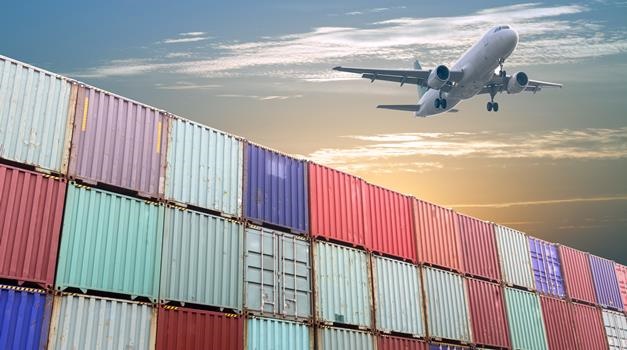
- Global demand for air cargo is growing and African airlines are seeing the same trend.
- This is according to the latest data released by the International Air Transport Association.
- Cargo business still faces a capacity challenge, because during normal times about 50% of air cargo was transported in the holds of passenger aircraft.
African airlines' cargo demand in February jumped by 44.2% compared to the same month in 2019 - the strongest of all regions in the world, the International Air Travel Association (IATA) announced on Wednesday.
Expansion on the Asia-Africa trade routes contributed to the strong growth. Africa has about 2.1% of the total air cargo traffic market in the world.
IATA represents some 290 airlines comprising 82% of global air traffic.
"[Global] air cargo demand is not just recovering from the Covid-19 crisis, it is growing. With demand at 9% above pre-crisis levels, one of the main challenges for air cargo is finding sufficient capacity. This makes cargo yields a bright spot in an otherwise bleak industry situation," said new IATA CEO Willie Walsh during his first briefing on Wednesday.
"It also highlights the need for clarity on government plans for a safe industry restart. Understanding how passenger demand could recover will indicate how much belly capacity will be available for air cargo. Being able to efficiently plan that into air cargo operations will be a key element for overall recovery."
IATA's February 2021 data for global air cargo markets shows that air cargo demand continued to outperform pre-Covid-19 levels with demand up 9% over February 2019. Global demand, measured in cargo ton-kilometres, was up 9% compared to February 2019 and up 1.5% compared to January 2021.
The recovery in global capacity, measured in available cargo tonne-kilometres, stalled owing to new capacity cuts on the passenger side as governments tightened travel restrictions due to the recent spike in Covid-19 cases. Capacity shrank 14.9% compared to February 2019.
Because comparisons between 2021 and 2020 monthly results are distorted by the extraordinary impact of Covid-19 during February 2020, IATA comparisons were made to February 2019, which still followed a normal demand pattern.
Operating conditions supportive
Operating conditions remain supportive for air cargo, according to IATA research. These conditions include the manufacturing sector improving.
IATA chief economist Brian Pearce commented that the role of air transport across Africa has been critical in supplying goods.
"The story of February is one of cargo strength. A V-shaped global economic recovery has driven cargo demand. International air travel yields are, however, desperately low and airlines are unable to stop cash burn due to low load factors. Unfortunately, cargo levels for most airlines are too low to offset the lack of passenger traffic," explained Pearce.
"Cargo business still faces a capacity challenge, because during normal times about 50% of air cargo was transported in the holds of passenger aircraft. Yet, currently the majority of international air travel markets are more than 15% less than before the coronavirus crisis."
Supply chain disruptions and the resulting delivery delays have led to long supplier delivery times. This typically means manufacturers use air transport, which is quicker, to recover time lost during the production process. The level of inventories also remains relatively low compared to sales volumes. Historically, this has meant that businesses had to quickly refill their stocks, for which they also used air cargo, according to Pearce.
"If you did not have air freight operating the way it is, then global supply chains would be in a very difficult situation," said Walsh.
"Clearly the demand for air cargo is quite strong. A lot of air cargo used to be carried in the bellies of passenger aircraft. Now, with significant constraints on the passenger side, we have seen limited capacity for cargo while passenger demand is lower. On the passenger side it is clearly very challenging."
